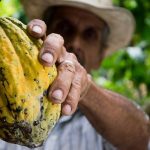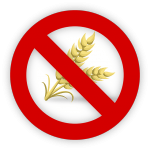Swollen shoot disease is a significant and destructive viral disease affecting cocoa (Theobroma cacao) plants, primarily in West Africa, where the bulk of the world’s cocoa is produced. First identified in the 1930s in Ghana, the disease has since spread to various cocoa-growing regions, posing a substantial threat to cocoa production and the livelihoods of millions dependent on this crop.
Etiology and Transmission
Swollen shoot disease is caused by the Cacao swollen shoot virus (CSSV), a member of the family Caulimoviridae, genus Badnavirus. CSSV is transmitted in a semi-persistent manner by several species of mealybugs (Hemiptera: Pseudococcidae), which are vectors of the virus. The most common vectors include Planococcus citri, Planococcoides njalensis, and Ferrisia virgata.
Symptoms
The disease is characterized by several distinctive symptoms, which vary depending on the cocoa cultivar, the age of the plant, and environmental conditions. Common symptoms include:
- Swelling of Shoots: One of the hallmark symptoms is the noticeable swelling of young shoots, often leading to distortion and abnormal growth patterns.
- Leaf Symptoms: Infected plants may display a range of leaf symptoms, including chlorosis (yellowing), vein clearing, and mottling. Some leaves may become misshapen or exhibit necrosis.
- Dieback: Progressive dieback of branches is often observed, where branches begin to die from the tip downwards.
- Reduction in Yield: Infected plants suffer from reduced pod production and quality, significantly impacting cocoa yield.
- Stunted Growth: Overall growth of the plant is stunted, with reduced vigor and sometimes death in severe cases.
Epidemiology
The spread of swollen shoot disease is closely linked to the activity and movement of mealybug vectors. These insects feed on the phloem sap of cocoa plants, acquiring the virus from infected plants and transmitting it to healthy ones as they move. Human activities, such as the transport of infected planting materials, also contribute to the spread of the disease.
Economic Impact
Swollen shoot disease poses a major economic threat to the cocoa industry. The loss of yield and the necessity to remove and replant infected trees impose significant costs on farmers and the broader economy. In Ghana alone, the disease has been responsible for devastating cocoa farms, leading to financial losses for farmers and impacting the country’s export revenues. The economic impact extends to reduced income for millions of smallholder farmers, increased costs for disease management, and challenges in maintaining sustainable cocoa production.
Management and Control
- Removal of Infected Trees: The most effective control measure is the removal and destruction of infected trees to prevent the spread of the virus.
- Vector Control: Managing mealybug populations through insecticides and biological control agents helps reduce the spread of CSSV.
- Resistant Varieties: Breeding and planting CSSV-resistant cocoa varieties is a long-term strategy to manage the disease.
- Quarantine and Regulation: Implementing strict quarantine measures and regulations to prevent the movement of infected plant material between regions is crucial.
Why It Is So Devastating
- High Transmission Rate: The disease spreads rapidly through mealybug vectors, making it difficult to control once established in an area.
- Lack of Cure: There is currently no cure for swollen shoot disease, so once a tree is infected, it cannot be saved.
- Economic Dependency: Many regions, especially in West Africa, rely heavily on cocoa as a major source of income and employment. The loss of cocoa trees directly impacts the livelihood of millions of farmers.
- Long-Term Damage: The disease not only reduces the immediate yield but also compromises the future productivity of cocoa farms, as young replacement trees take years to mature and become productive.
Swollen shoot disease remains a significant challenge for the cocoa industry, necessitating ongoing research, vigilant management practices, and international cooperation to mitigate its impact.



Leave a Reply